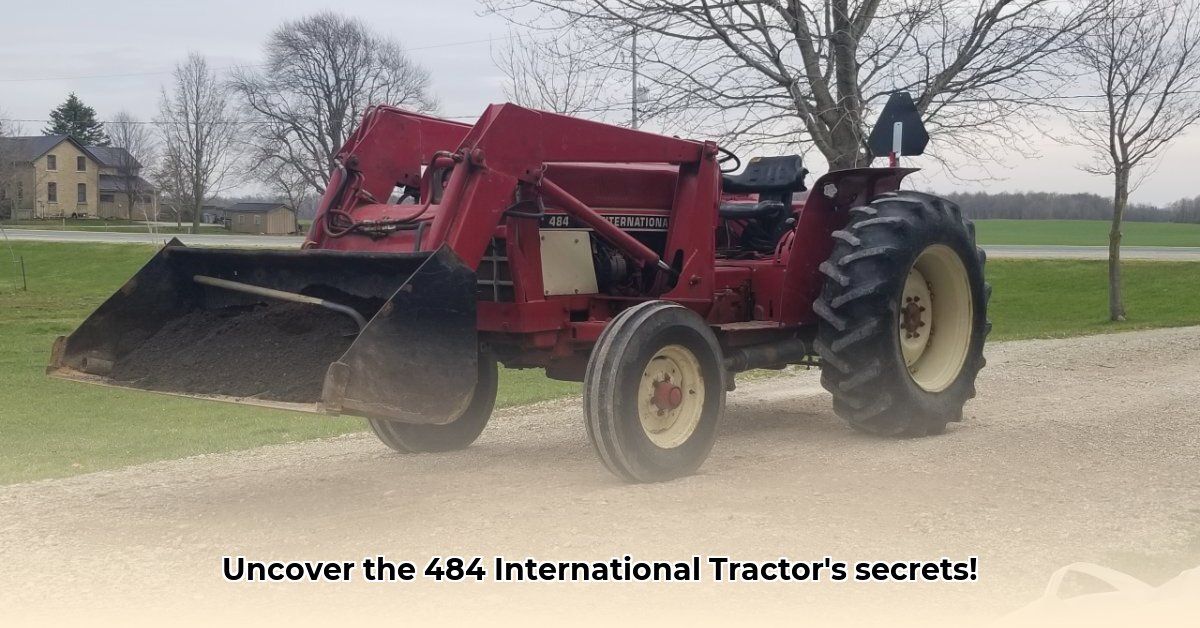
This comprehensive guide delves into the International Harvester 484 tractor, examining its history, performance, cost of ownership, environmental impact, and market position. We'll compare it to modern tractors, offering actionable advice for farmers, dealers, and policymakers. For a comparison of modern tractor specs, see this tractor comparison chart.
Specifications and Performance: A Classic's Capabilities
The IH 484, produced from 1977 to 1982, was a workhorse in its time. Its specifications, however, reveal a significant gap compared to contemporary agricultural machinery. While its 50 horsepower engine and 3,100-pound rear lift capacity were impressive then, modern tractors boast substantially increased power and efficiency. Think of it like comparing a classic car to a modern electric vehicle – both achieve their purpose, but modern alternatives offer markedly superior performance and fuel economy.
Here's a comparative table:
| Specification | 1977-1982 IH 484 Tractor | Modern Tractor (Example) |
|---|---|---|
| Horsepower | 50 | 150-200+ |
| Fuel Tank Capacity (gal) | 20 | 60-100+ |
| Rear Lift Capacity (lbs) | 3100 | 8000-12000+ |
| Fuel Efficiency (gal/hr) | (Data Needed) | Significantly Lower |
| Emissions (g/kWh) | (Data Needed) | Significantly Lower |
Isn't it fascinating to see just how far technology has advanced in agricultural machinery? This significant leap in technology highlights the remarkable progress made over the years.
Cost Analysis: The True Price of Ownership
Determining the total cost of ownership (TCO) for an IH 484 requires a comprehensive approach. While the original price might have been approximately $11,800 in 1984, inflation dramatically increases that figure today. Furthermore, maintenance, fuel consumption, and repair costs must be considered. Finding parts for an older tractor can be challenging, often translating into higher expenses. Is the IH 484 a more economical option than a modern tractor? That depends on several variables, including farm scale and budgetary limitations. A thorough cost-benefit analysis is crucial before making a purchasing decision.
Sustainability Assessment: Balancing Economics and the Environment
While the IH 484's fuel efficiency was respectable for its time, it significantly lags behind contemporary models. Assessing its total environmental impact—from manufacturing to disposal—requires detailed examination. Comprehensive data on lifecycle emissions is scarce, highlighting a knowledge gap regarding its long-term environmental footprint. This lack of data raises a critical question: Does continued use of older equipment like the IH 484 genuinely reflect a dedication to sustainable agriculture, or is it primarily an economic necessity for smaller farms? This nuanced question merits careful consideration. The environmental impact of this tractor needs further investigation.
Market Analysis: Navigating the Used Tractor Market
The used market for IH 484 tractors remains active, although pricing varies widely depending on condition and operating hours. Part availability and service access significantly influence value. Reliable data is scarce, making precise market analysis challenging. It's currently a buyer's market, with prices fluctuating based on supply and demand. It is important to note the lack of universally available data that makes accurate pricing difficult.
Actionable Advice: Guidance for Various Stakeholders
Actionable advice is crucial for all parties involved:
Small-scale Farmers: Carefully assess your operational needs. Would an IH 484 meet those needs effectively, or would a modern tractor offer better long-term value? Investigate available government subsidies potentially offsetting the costs of newer, more fuel-efficient models.
Equipment Dealers: Consider the niche market for parts and service for classic tractors like the IH 484. Stocking essential parts and maintenance manuals could create a profitable business segment.
Agricultural Researchers: Investigating the environmental impact of older versus modern tractors would greatly advance our understanding of sustainable agriculture. Exploring potential retrofit options to improve fuel efficiency and reduce emissions is another valuable area of research.
Policymakers: Continue supporting advancements in sustainable agriculture through effective policies and financing options that aid farmers in investing in modern, efficient equipment. Policies supporting refurbishment or upgrades can help farmers maintain existing equipment while lessening environmental impact.
Maintenance and Repairs: Preserving a Legacy
Maintaining an IH 484 requires diligence and mechanical aptitude. Finding parts may be more challenging than for newer models. Online forums and specialized repair shops are invaluable resources. Regular preventative maintenance is essential.
Conclusion: A Legacy in Transition
The IH 484 represents a significant chapter in agricultural history. While its age presents limitations, understanding its capabilities in the context of modern alternatives is key to informed decision-making about sustainable farming practices. The ongoing discussion about the sustainability of older equipment versus investment in new technology remains a topic of ongoing investigation.